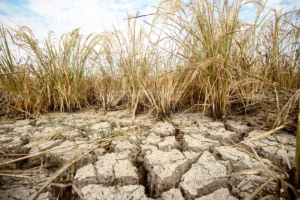Peru’s farming sector saw a 2.9% drop in output last year, the sharpest decline since 1992.
The coastal El Niño effect played a big part, as reported by Peru’s Ministry of Agricultural Development and Irrigation.
The farming subsector faced a 4.1% fall, while livestock was down by 0.9%.
Crops like blueberries, potatoes, asparagus, and mangoes suffered a decrease of up to 23.1%.
Yet, grapes, avocados, artichokes, and several others showed gains.
On the livestock side, chicken and cow milk production dipped. Conversely, cattle, pigs, and sheep saw increases.

Despite a challenging year, December offered a glimmer of hope with a 0.2% rise in output. This uptick came from a 0.8% increase in farming, even as livestock lagged.
Agriculture is crucial for Peru, contributing 6% to GDP and employing a significant portion of the workforce.
The 2023 slump marks a low point, reminiscent of 1992’s 7.7% contraction.
However, the sector’s resilience is evident in its recovery periods, notably in 1994 and 1999, with substantial growth.
The Central Reserve Bank of Peru (BCRP) anticipated a 3% fall in agricultural GDP, aligning closely with actual outcomes.
Coastal El Niño’s Impact
The Coastal El Niño’s impact was more severe than expected, disrupting crop cycles and reducing yields.
This event particularly affected fruit cultivation and led to lesser production of other coastal crops due to heavy rains.
Looking ahead, the BCRP is optimistic, revising its 2024 growth forecast for the sector to 3.5%. This adjustment is based on expected improvements in weather conditions.
For 2025, a similar growth rate is projected, signaling a hopeful turnaround for both agriculture and livestock.
This downturn, while severe, underscores the sector’s vulnerability to climate conditions.
Yet, the forecasted recovery highlights Peru’s ability to adapt and rebound, promising a brighter future for its agricultural landscape.

